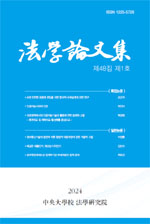- 영문명
- The International Reception of Neuroimaging Evidence and Legal Challenges in South Korea: A Comparative Study of the United States and the United Kingdom
- 발행기관
- 중앙대학교 법학연구원
- 저자명
- 권솔지(Solji Kwon)
- 간행물 정보
- 『법학논문집』第49輯 第2號, 107~146쪽, 전체 40쪽
- 주제분류
- 법학 > 법학
- 파일형태
- 발행일자
- 2025.08.31

국문 초록
본 논문은 뇌 과학, 특히 뇌 영상 기술이 법정에서 과학적 증거로 활용되는 방식을 중심으로, 해당 기술의 법적 수용 현황과 향후 제도적 과제를 종합적으로 고찰한다. 최근 수십 년간 뇌 과학은 인간 행동의 신경학적 기반을 밝히는 데 있어 괄목할 만한 성과를 이루었으며, 뇌 영상 기술은 인간 정신과 신경 기능을 정밀하게 관찰할 수 있는 핵심 도구로 자리매김하고 있다. 이에 따라 법의 영역에서도 뇌 영상 기술을 활용하여 피고인의 책임능력, 고의성, 소송능력, 그리고 피해자의 손해 정도 등을 입증하고자 하는 시도가 지속적으로 증가하고 있다.
본 연구는 뇌 영상 기술의 유형과 각 기술의 과학적 특성을 먼저 소개한 후, 뇌 영상 증거가 실제로 어떤 방식으로 법정에서 활용되고 있는지를 살펴보기 위해 미국과 영국, 그리고 우리나라의 구체적인 사례를 비교법적 관점에서 분석하였다. 미국의 경우, 주로 형사재판의 양형 단계에서 피고인의 신경학적 손상을 입증하여 사형을 면하게 하거나, 심신미약 상태를 주장하는 데 뇌 영상 자료가 결정적인 역할을 한 판례들이 다수 존재한다. 특히 fMRI, PET, EEG 등 다양한 기능적 뇌 영상 기법들이 법정에 제출되고 있으며, 청소년 형사정책이나 소송능력 판단에서도 뇌 영상의 과학적 정보가 중요한 판단 요소로 활용되고 있다. 영국 역시 형사・민사 양 분야에서 구조적 뇌 영상 증거의 활용이 지속적으로 시도되고 있으며, 피고인의 심신상실 또는 미약 상태, 피해자의 신체・정신 손해 입증, 증인의 신빙성 판단 등 다양한 쟁점에서 보조 증거로 활용되고 있다. 특히 법원은 뇌 영상 단독으로 판단을 내리기보다는 전문가의 감정과 함께 이를 종합적으로 고려하는 방식으로 신중하게 접근하고 있다.
우리나라에서도 최근 들어 뇌 영상 자료가 피고인의 심신장애 주장이나 민사 사건에서 손해의 입증자료로 활용되고 있으며, 일부 사건에서는 판결의 방향에 실질적인 영향을 미친 사례도 나타나고 있다. 특히 박○○ 사건에서는 MRI와 fMRI 결과를 바탕으로 피고인의 전두엽 손상 여부와 충동 조절 장애 등을 판단하는 데 뇌 영상이 중요한 근거로 작용했으며, 이후 여러 판결에서 유사한 자료들이 전문가 감정의 신빙성을 보강하는 역할을 하고 있다.
그러나 이러한 활용 확대에도 불구하고, 뇌 영상 증거의 과학적 신뢰성과 법적 정합성 간의 간극, 감정인의 자격 문제, 감정 절차의 표준화 부족, 개인정보 보호 문제 등 해결해야 할 제도적 과제들이 산적해 있다. 특히 뇌 영상은 고도의 해석이 필요한 기술임에도 불구하고, 이를 법원이 독립적으로 판단하기에는 한계가 분명하며, 자칫 피고인의 방어권 침해 또는 낙인 효과로 이어질 수 있는 위험성도 존재한다. 따라서 향후 뇌 영상 증거가 보다 효과적이고 안정적으로 법정에서 활용되기 위해서는 표준화된 해석 지침과 증거 수용 기준 마련, 공인 감정인 제도 및 감정 절차의 체계화, 개인정보 보호를 위한 법적・기술적 통제장치 구축, 법조계와 과학계 간의 학제 간 협력체계 구축이 필수적이다.
결론적으로 뇌 영상 기술은 법을 대체하는 것이 아니라, 과학과 법이 서로 보완함으로써 보다 공정하고 신뢰 가능한 사법 판단에 기여할 수 있는 중요한 수단이 될 수 있음을 강조한다. 나아가 법과 과학의 신중하고도 조화로운 통합을 통해, 사법 정의의 품질을 향상시키는 실질적인 기반이 마련되어야 함을 시사하며, 본 논의가 그 출발점이 되기를 기대한다.
영문 초록
This study explores the legal admissibility and practical implications of neuroimaging evidence in judicial proceedings, with a focus on comparative analysis among the United States, the United Kingdom, and South Korea. As neuroscience continues to advance, brain imaging technologies such as MRI, fMRI, PET, and EEG have emerged as powerful tools to visualize brain structure and function in a non-invasive manner. These technologies are increasingly being introduced into courtrooms, where they are used to assess criminal responsibility, intent, mental competence, and the extent of psychological harm in both criminal and civil cases.
In the United States, neuroimaging evidence has played a critical role in sentencing mitigation, particularly in capital punishment cases. Courts have considered structural and functional brain anomalies as grounds for reduced culpability, with notable cases involving PET scans, fMRI results, and qEEG analyses. In the UK, courts have cautiously accepted neuroimaging as supplementary evidence, especially in appeals involving diminished responsibility or mental incompetence. British courts tend to evaluate such evidence in conjunction with expert testimony rather than as standalone proof.
In South Korea, although still in its early stages, the use of brain imaging evidence is gradually expanding. Courts have accepted MRI and fMRI data as supplementary to expert opinions in determining criminal responsibility, especially in cases involving claims of diminished capacity. However, challenges persist. The legal system currently lacks standardized guidelines for interpreting neuroimaging data, and the scientific complexity of these technologies poses difficulties in ensuring consistent and fair judicial outcomes. Moreover, concerns related to privacy, stigmatization, and biological determinism highlight the ethical dimensions of such evidence.
To enhance the appropriate use of neuroimaging in legal contexts, this study emphasizes the need for: (1) standardized interpretation guidelines and admissibility criteria, (2) formalized expert witness systems and transparent evaluation procedures, (3) robust privacy protections for neurological data, and (4) interdisciplinary collaboration between legal professionals and neuroscientists. Ultimately, neuroimaging should not replace legal reasoning but complement it by offering scientifically grounded insights into human behavior. A balanced integration of science and law can contribute to a more informed, fair, and just legal system.
목차
Ⅰ. 서론
Ⅱ. 뇌 영상 기술과 증거로서의 적용
Ⅲ. 뇌 영상 증거의 국제적 수용 현황
Ⅳ. 우리나라에서의 뇌 영상 증거
Ⅴ. 결론
참고문헌
키워드
해당간행물 수록 논문
참고문헌
최근 이용한 논문
교보eBook 첫 방문을 환영 합니다!

신규가입 혜택 지급이 완료 되었습니다.
바로 사용 가능한 교보e캐시 1,000원 (유효기간 7일)
지금 바로 교보eBook의 다양한 콘텐츠를 이용해 보세요!



